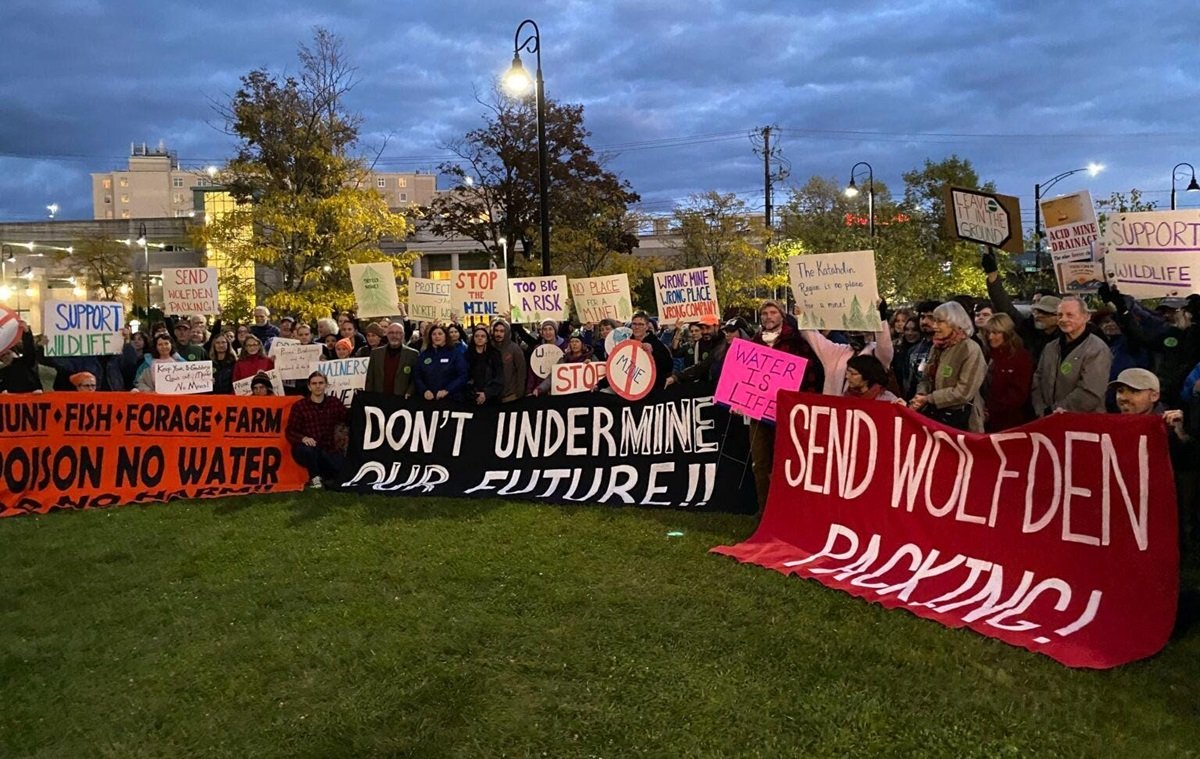- cross-posted to:
- [email protected]
- cross-posted to:
- [email protected]
cross-posted from: https://slrpnk.net/post/14652759
I don’t like this article but it’s an interesting read and I get into details of picking it a part a bit in the comments of the original post. I also share my comment here.
Man, there’s a lot to unpack in this article. I’m by no means a proponent of mining, but it is certainly not going anywhere. We’ve been mining since we used rock and wood and bone tools. I honestly don’t see any sort of green transition without mining though. Do we just keep burning fossil fuels then?
I don’t know if I can answer it much more clearly than to say “intensification of resource extraction” in the name of a “green transition” is a “false dichotomy” and “incompatible with living in a way that is in harmony with our surroundings
I get the sentiment, but what is the alternative? How else do we get the materials we need to push a green transition? One of my major complaints about this article is that the offer no alternative suggestions.
Sustainable’ mining is an oxymoron. There is no way to convert a living land base into products and protect its unique biodiversity and cultural value. There is no clean way to dig into the Earth, “backfill it,” and try to return the ecosystem to its natural state, which took hundreds of years to develop. If we actually want a chance for a livable planet, we must stop the poisoning before it happens, not tolerate the amount corporations are permitted to poison, or sacrifice what remains of the natural world for a ‘greater good’ — a faulty pretense.
See my argument above: no alternative offered. Mining doesn’t have to be inherently toxic. There are ways to manage metal leaching, and I fear the author is painting with far too wide of a brush. Mining has a terrible legacy environmentally, and I won’t dispute that, but responsible mining is possible and is going in some jurisdictions.
Wolfden Resources, a Canadian Junior Mining Company with backing from Altius Minerals and Kinross Gold, has recently attempted to develop two separate polymetallic sulfide mines in the state. Luckily, both projects have been defeated, at least for the time being. It may be obvious, but polymetallic sulfide mines are industrial operations designed to extract multiple metals (gold, silver, copper, zinc and lead in the two recently proposed projects) that are found within a sulfide-based ore buried deep beneath the surface of the earth. When sulfide ores are uncovered and exposed to air and water a chemical reaction begins which creates sulfuric acid. Toxic heavy metals trapped in the ore, including mercury and arsenic, are released in the process. This chemical reaction, known as acid mine drainage, tends to runaway, and once started is almost impossible to stop. Twenty-eight years after its closure, water at the Iron Mountain Mine in California was found to have a pH of negative 3.6! Sulfide mines from the Roman Empire are still leaching acid 2,000 years after their closure.
He’s described Metal Leaching/Acid Rock Drainage (ML/ARD for short). Just about every mine that operates deals with this issue. They correctly point out the risks, but iron mountain is kind of cherry picking in terms of making an argument against it. They have a really wild geology that makes things there super acidic. There are ways to stop ML/ARD once it’s going, like submerging the rock in water (it’s an oxygen driven reaction), and there are ways to prevent it from starting in the first place. Further, onset times are usually decades rather than immediately.
In addition to the groundwater contaminated through exposure to acid and heavy metals in the mining works, the proposed Pickett Mountain Mine near Mt. Katahdin would have contaminated more than 800,000 gallons per day in the process of concentrating the ores to marketable levels. This process—called flotation—relies upon adding a cocktail of toxic “reagents” to the slurry of finely ground ore and water. The Pickett Mountain Mine concentrator would have used more than 2,000 pounds of cyanide in this process everyday.
There are international guidelines on cyanide management and most jurisdictions require a cyanide management plan.
And finally, the tailings, the waste left over once the marketable metals have been removed from the ore, are a continual source of water contamination and must be “managed in perpetuity.”
Depends on the way the ore was processed, and the host rock. The tailings from Mount Polley, which had a major dam breach, are geochemically inert, and can be planted in.
This looks like huge geo-synthetic liners, basically heavy duty tarps, covering millions of tons of finely ground waste rock to prevent it from blowing away or getting wet.
Highly dependent on the cover design. Not all use liners. One I’m working with right now just traps moisture, and keeps the tailings saturated, which prevents oxygen ingress and stops ML/ARD generation
No trees can ever be allowed to grow on top of the “reclaimed” tailings piles because their roots can puncture the covers causing them to fail.
Again, depends on cover design, but this is generally true. That doesn’t mean nothing grows in them, though. Usually we select for grasses and plants with prostrate rooting patterns.
Again, I don’t love mining, especially when it’s irresponsible. I find it very interesting because of all the challenges associated with it, and how vital it is to our society.
Finally, the ICMM has a good practice guide (fill your boots!) on how to mine responsibly and to plan for closure, and why you want to plan for closure to begin with.


